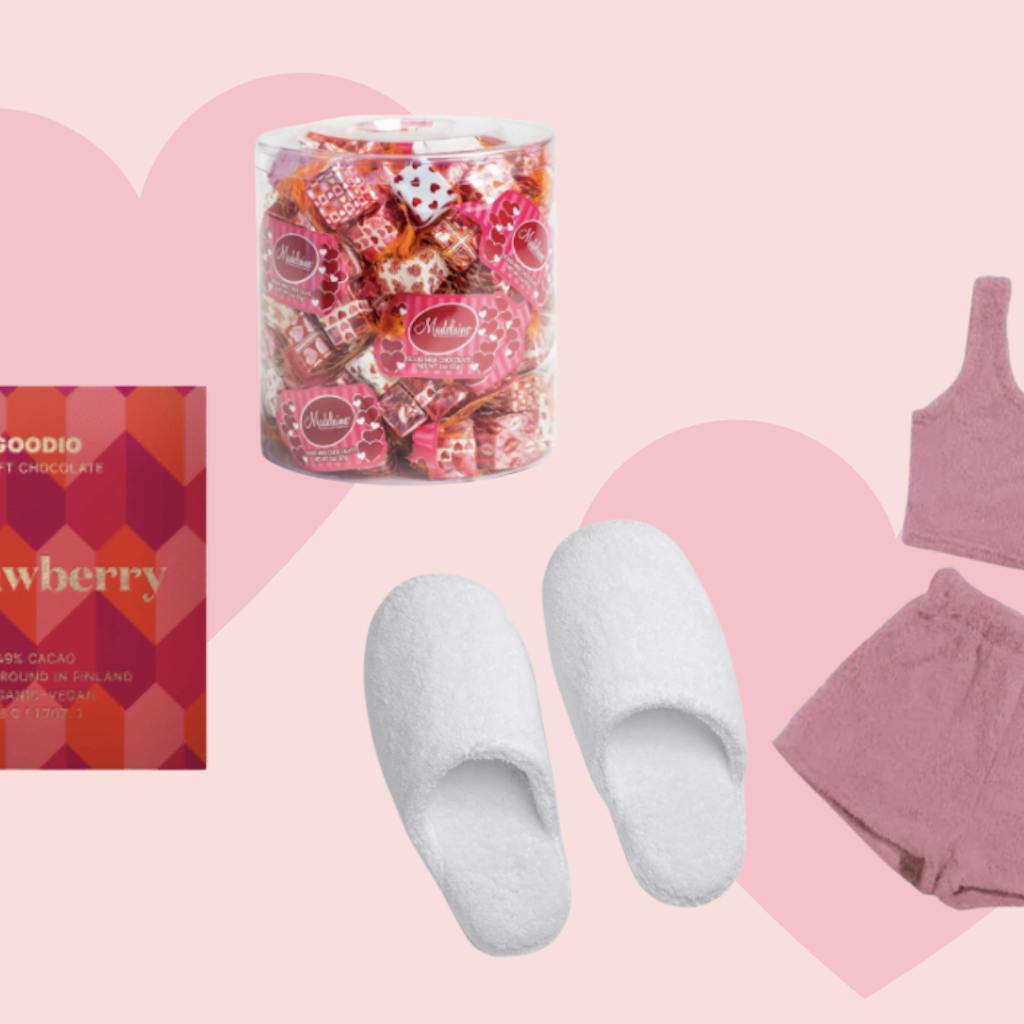Love is in the air for Valentine’s Day, but unfortunately, so are new COVID variants.
Due to this, Valentine’s Day 2021 — the first pandemic Valentine’s Day — saw an 18.6% drop in spending, according to GlobalData, which has offices in London and New York City. This was primarily due to consumers staying at home, says Neil Saunders, Managing Director and Retail Analyst.
Top gifts for Valentine’s Day
Valentine’s Day is a bumper day for retailers, to spread some love and inspire a whole lot of spending. Traditionally consumers stick with traditional gifts like chocolates, candy, and flowers, along with jewelry, according to GlobalData.
According to Emarsys, a customer engagement platform, Valentine’s Day 2021 in the U.K. was all about comfort, with 7% of survey respondents saying they’d like to receive loungewear as a gift — just less than those wishing for underwear (8%). However, chocolates still rule the roost, with 20% of respondents hoping to pamper their lover’s sweet tooth.
Australians also went out less for Valentine’s Day in 2021, says Anastasia Lloyd-Wallis, CEO and Head of Consumer Insights, Retail Doctor Group, Sydney, because “the pandemic has caused consumers to spend more time with their loved ones. Hence the need for a specific night may have less appeal.” Overall, however, spending for Valentine’s Day was up 19% last year, she points out, according to Finder.com.au.
In 2021, Australian consumers hoped to receive activewear (18%), comfortable underwear (13%), and shoes (12%). Despite this desire to exercise, 36% of survey respondents said they’d buy chocolates for a loved one, making it the No. 1 gift last year.

Sales bounce back
Valentine’s Day 2021 was a bust in the U.S. and the U.K., but not Australia, and should improve this year.
Despite major e-commerce growth over the past two years, traditional brick-and-mortar stores are likely to see more business, but omnichannel retailers — those with integrated store and online operations — should have strong appeal and outperform their digital-only rivals, says John Mercer, head of global research, Coresight Research in London, U.K.
Saunders expects Valentine’s Day to bounce back, though maybe not until the pandemic is well behind us, since “all of the erosion of spend has been related to COVID rather than any other factors.” And since Valentine’s Day 2020 was a record-breaking year, with a 21% increase in sales from 2019, it seems that’s more than likely.
Where are we shopping?
According to the National Retail Federation (NRF), the internet was the most popular Valentine’s Day shopping destination last year, visited by 38% of consumers, followed by department stores (29%), discount stores (28%,) and local small businesses and specialty stores (tied at 17%).
In terms of actually shopping, most people, says Saunders, buy Valentine’s Day goods at mass chains such as Walmart, Target, and Kroger. “These retailers make a big effort around Valentine’s and have aisles dedicated to the occasion,” he points out.

However, in a Coresight 2021 survey before Valentine’s Day, almost half of respondents (47%) who expected to buy gifts for Valentine’s Day planned to do so at grocery stores. This was followed by online-only retailers (34%) and other specialty stores (19%). Only 18% of Valentine’s Day shoppers said they were likely to shop at department stores, a traditionally robust category for this channel.
In the U.K., 21% of Emarsys’ survey respondents reported preferring to buy Valentine’s gifts online due to the deals offered. That figure in Australia rises to 31% since shoppers are looking for deals.
Gift recipients
Because Valentine’s Day has become less a day for Cupid, and more a day to enjoy and express love, friendship, and gratitude, it’s become a day for which many people shop.
“Gifting to significant others is still the biggest area of spending,” Saunders points out, though adds that “many people – especially younger age groups — now celebrate with friends.” Spending on pets has become bigger over recent years, and self-gifting is also becoming more important.
Younger generations in Australia, says Lloyd-Wallis, tend to purchase more for their friends, but she’s also seen an increase in self-love with 11% of consumers planning to buy gifts for themselves. Consumers, she says, have been “prompted by the tough nature of the last two years.”
And now, given what we’ve learned, I’m going to do a little personal shopping — maybe chocolates and athletic wear.

